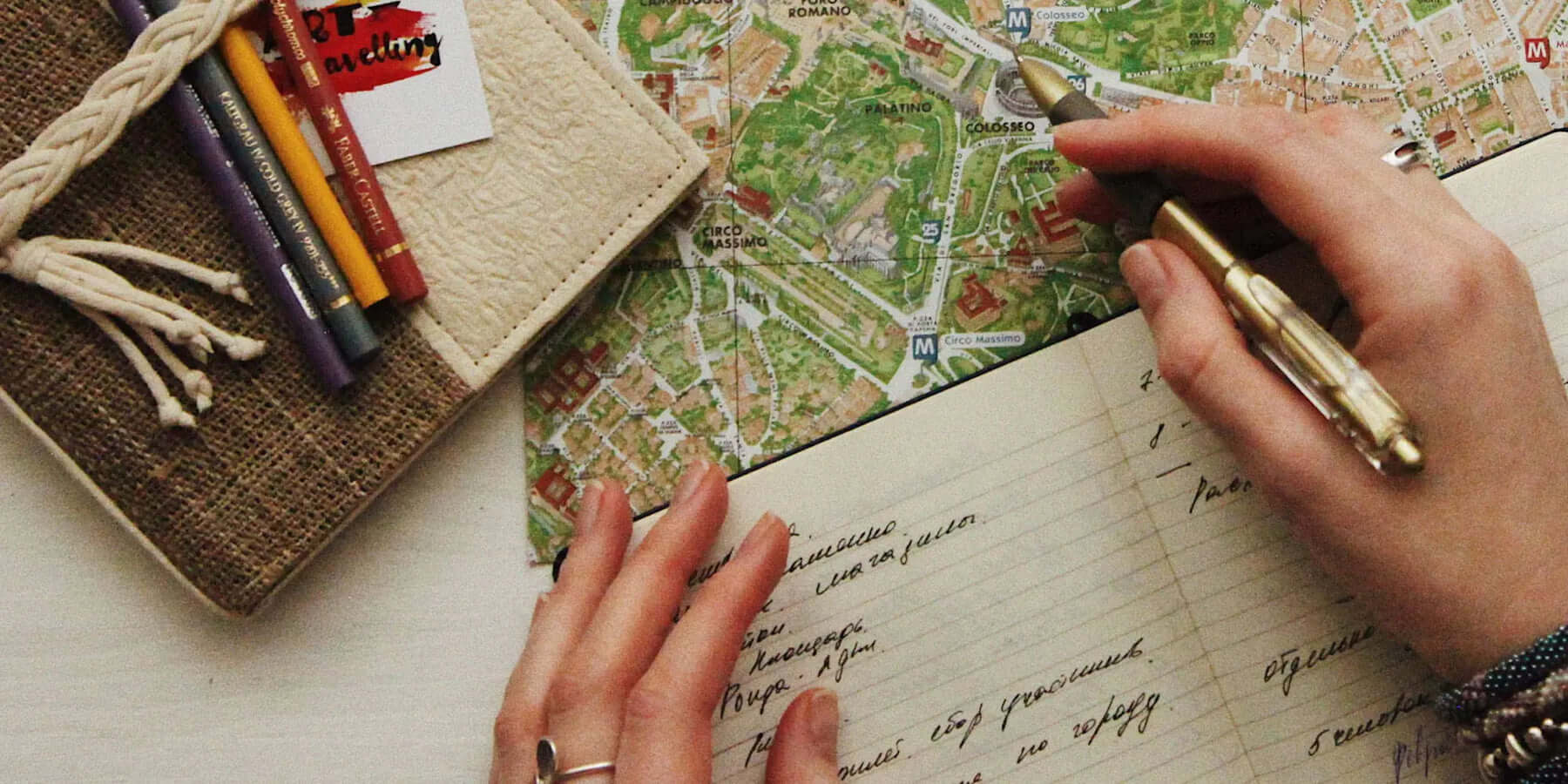Travel is one of the greatest joys and most mind-opening experiences we can have in this life. The world would be a kinder, more tolerant place if we could all do more of it without having to quit our jobs. (Fortunately, it is possible to travel and maintain gainful employment at the same time.) Often it's not time but money that prevents us from persuing our travel dreams.
Today we are sharing our top 10 tips for making planning an annual travel budget, so travel gets prioritized instead of ending up on the back burner due to lack of funds!
1. Start with your travel goals for the year
Assuming you’ve done the essential task of creating your lifetime travel bucket list, pull it out and decide which dream destinations you want to check off this year. Whether it’s one major international trip, a few short and sweet trips, or even just a breezy, low-cost road trip, determine what you want to accomplish and can afford.
On the other hand…
2. Keep an open mind on where to go
If you want to get the most bang for your buck, there are many websites available to help you choose a travel destination. Whether you’re after maximum beach time, a foodie fantasy, or have an itch to visit significant historical sights, there are deals to be found.
The website Smarter Travel is a good source for finding great travel deals, as well as other useful advice, such as the best travel gear, memoirs, and safety tips. Perhaps consider choosing travel based upon destinations where the U.S. dollar goes the furthest. If you want to get away but are cash or time-strapped for a passport—consider some exotic locales where you don’t need one!
3. Identify essential big ticket expenses
The obvious ones that probably come to mind first are airfare and accomodations. We’ve written before about how to find the best deals, but here are some other, transportation-related costs to consider as well.
If you’re traveling around Europe, especially to various countries, it might be in your budget’s best interest to get a Eurail pass. A Eurail pass is basically an all-in-one train ticket that grants you access to most trains in Europe, so you can go wherever you want, whenever you want. While a few of the trains ask you to make a reservation, in most cases you just flash your pass and hop on board.
Not only might a Eurail pass be the most inexpensive way to travel across Europe, it’s also a wonderful way to see some fantastic scenery, lovely countryside, villages, and cityscapes. You have the option of choosing a pass for one specific country, or a global pass to all of them, in addition to the choice between riding first or second class. Other benefits of having a Eurail pass include discounts on ferry services, city cards, and Swiss trains. Be sure to check out their travel deals, which can nab you some serious discounts on everything from travel insurance, mobile data/SIM cards, and services such as luggage storing.
For rental cars, you’ve got several options, but Auto Rentals and Rentalcars.com are solid places to start. Both are metasearch systems that make it easy to compare prices from companies in major cities all over the world. The latter also has a price match guarantee, and both have free cancellations on most bookings.
Also, don’t forget to leverage common memberships to get great deals on rental cars! If you have a Costco membership, you’ll find that they offer unbeatable deals, and often you can add an additional driver for free. AAA is another membership that will snag you additional discounts, as well as some frequent flier programs, such as American Airlines’ AAdvantage program, though you’ll need to rent from the airport.
Taking a bus is generally far less expensive than flying, renting a car, or taking a train, but they usually take much longer to get you where you’re going. If time is no concern and you need to travel on the cheap, try CheckMyBus, Comparabus and Busbud. Each of these sites are pretty straightforward and function basically the same way, by searching various bus companies and routes to help you nab the best deal to get from Point A to Point B.
4. Plan your itinerary
Unless you’re planning a trip to a silent monastic retreat, your objective in traveling is to experience a place and a culture by meeting people and seeing and doing cool things, and cool things are different for different people.
A good place to get started figuring out how you want to spend your time is with Get Your Guide, which gets you the best deals on some of the most popular sightseeing tours and guided tours the world over. It’s easy to use, and in most cases, you can cancel bookings for free up to 24 hours before they start. If you’re unsure about the validity or trustworthiness of a particular tour, they have “Get Your Guide Originals” and “Get Your Guide Certified” authentications, which are essentially reassurance that the touring outfit or ticket seller has been thoroughly vetted and is considered superb.
Another great thing about Get Your Guide is that in addition to providing you with a full description of the tour, they tell you everything that’s included, what’s excluded, as well as how to prepare for the activity, (e.g. what you need, what you’re permitted and not permitted to bring, and any applicable dress codes). There are also tons of reviews and ratings from travelers who have participated in the various activities and tours, so you’re able to get a solid idea of what to expect. Bonus: skip the lines from booking in person, spend more time enjoying every minute of travel.
5. Evaluate your travel priorities
This goes along with planning your itinerary, but it’s important because people value different experiences when it comes to travel. If you’re traveling with companions you’ll want to be on the same page. Fortunately, most major travel destinations have something for everyone, whether you’re a foodie, a history buff, or a music lover traveling in Cleveland, Dublin, or Prague, it’s definitely possible to satisfy everyone. Just be sure to communicate your travel hopes and expectations, and be willing to accommodate those of others when planning your itinerary, so everyone goes home happy having had a meaningful, memorable trip.
6. Start saving early and smartly
This is the actual money part, folks. Once you know how much you’ll need to budget for a particular trip, start saving towards that goal every month. One way to make this easier is by using saving apps, such as Mint, Nerdwallet, or Trail Wallet. For example, Mint allows you to easily set financial goals, including travel specifically, and start setting aside money for that purpose. Another nifty thing about the Mint app is that you can also set up Acorns or Stash within it, features and apps of their own that automatically round up your spare change from everyday purchases and tuck it into your investing account.
If you’re unsure how to ballpark what the cost of travel entails in various places around the world (because it can fluctuate a lot), Budget Your Trip is an excellent tool to help you determine that number by showing you the average travel costs from actual travelers. For example, you can choose a specific country and see the average daily, weekly, and monthly costs per person, or per couple. You can further break it down by region, city, types of accommodations, and itineraries. Everybody’s travel budget varies. Budget Your Trip makes it easier to know what you can afford, whether you’re on a student/backpacker shoestring budget, or plan to pull out all the stops for the luxury trip of a lifetime.
Regardless of the expected budget you set for yourself, it is a wise idea to increase it by 10% to be on the safe side. Tourist-trap markups, unfavorable currency exchange rates, unexpected necessities and even health emergencies can tack on more costs than you planned for.
Speaking of currency exchange rates, don’t make the mistake of using airport kiosks to change money, which charge ridiculous fees. Try to exchange money before your trip at your local bank or credit union, and once you reach your destination, your bank’s ATM network is usually your best option. You can find current exchange rates using the XE Currency Converter.
7. Don’t forget to budget for incidentals
It’s important to plan for all possible expenses, not just the obvious ones. Some commonly overlooked travel costs include:
- Tips and gratuities for luggage porters, bellhops, housekeeping, room service, taxis, restaurant servers, and the like
- Airline fees for checked bags and non-complimentary meals and beverages
- Public transportation such as subway and cab fares or Uber and Lyft rides
- Rental cars, boats, scooters, etc.
- Tours, excursions, museums, activities, and live performances
- Meals, snacks, and drinks
- Travel insurance
- Necessary visas
- Necessary vaccinations
- Forgotten necessary items, such as medications or toiletries
- Incidentals such as sunscreen, bug spray, bathing suits, firewood, charcoal
- Fuel, if driving a car, truck, SUV, rental, or recreational vehicle
- Other miscellaneous entertainment
- Souvenirs
8. Use miles, points, & hotel loyalty programs to your advantage
The average American has between 2 to 4 credit cards. You most likely use one for daily expenditures, but is it earning you valuable miles you can put towards future travel? If not, consider applying for one of the over one hundred of co-branded airline frequent flier reward program credit cards! Which one you choose is a matter of where you live, which airlines you fly most frequently, and personal preference. The same goes for hotel loyalty programs. These are far from exhaustive lists, but some of the most highly rated travel rewards credit cards include:
- Chase Sapphire Preferred Card
- Capital One Ventures Rewards Card
- Delta Skymiles Gold and Platinum Cards
- Citi AAdvantage Executive World Elite Card
- United Explorer Card
Top rated hotel loyalty programs include:
- Marriott Bonvoy
- Wyndham Rewards
- World of Hyatt
- Choice Privileges
- Best Western Rewards
- IHG Rewards Club
9. Talk to people who've been there
Pretty straightforward advice, but if you know people who have traveled to where you're going, ask them about their experiences! Find out where they stayed, what they enjoyed most about their trip, which sights are the most worthwhile, places to avoid, and if they considered it affordable or expensive.
Similarly, find a current guidebook that appeals to you and use it to find the best values. First time in Rome, looking for a spectacular plate of carbonara at a decent price? There are dozens of guidebooks to choose from, and almost all of them offer excellent recommendations for a variety of restaurants at different price points. They can prove to be invaluable tools to help your budget stretch further.
10. Go with the flow
Despite the best laid plans of mice and men, unexpected things happen in life. A kid gets sick and you have to take off unplanned time from work to care for him; the washing machine is on the fritz and needs to be replaced; you dropped your smartphone in the toilet and now it’s toast; a bruising economy leaves you laid off. Major bummers. It can be very disheartening when plans you’ve budgeted for and worked hard to achieve must be abandoned as the result of scheduling constraints or unaffordability.
But when life gives you lemons, you make lemonade. Sure, maybe you can’t take that two week vacation to O’ahu, but you might still be able to swing a week in Daytona Beach, or a 4-day weekend road trip to a pal’s cabin in the hills. Still a no-can-do? Be a tourist in your own town! Hit the trails in that state park you’ve been meaning to visit, take a tour of the local brewery, or just pack up a simple picnic lunch and a blanket, pile the kids in the car, head to the park and enjoy the springtime sunshine. The key is to get out, take advantage of whatever opportunities you can to travel and experience the world, even if you’re just traveling in your own backyard.









Share:
30 ways to satisfy your wanderlust at home
The best travel decor to inspire your wanderlust from home